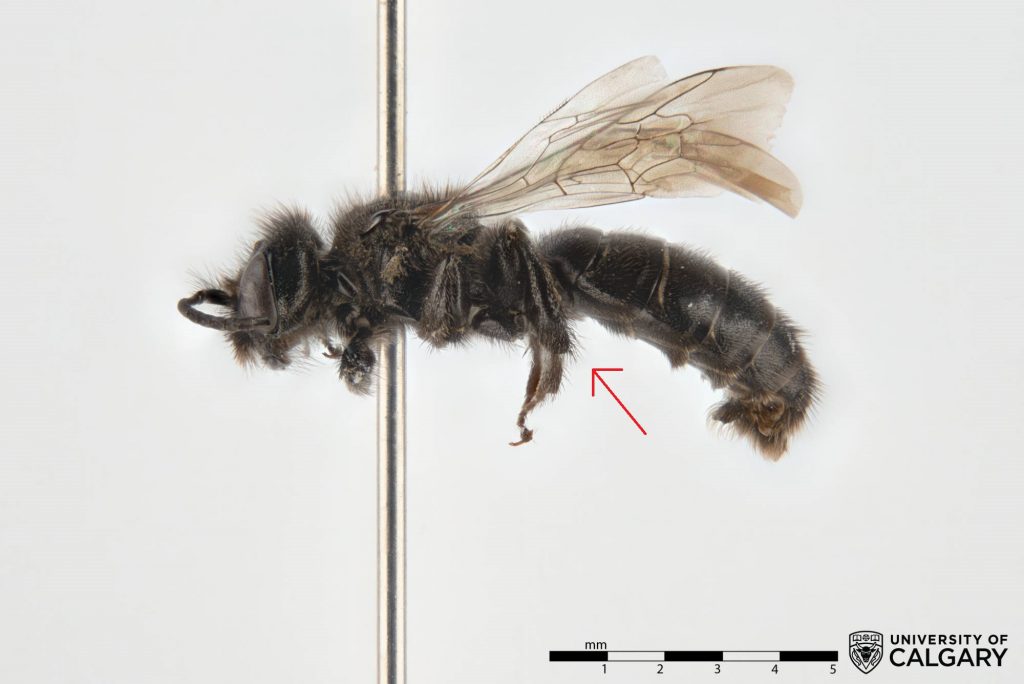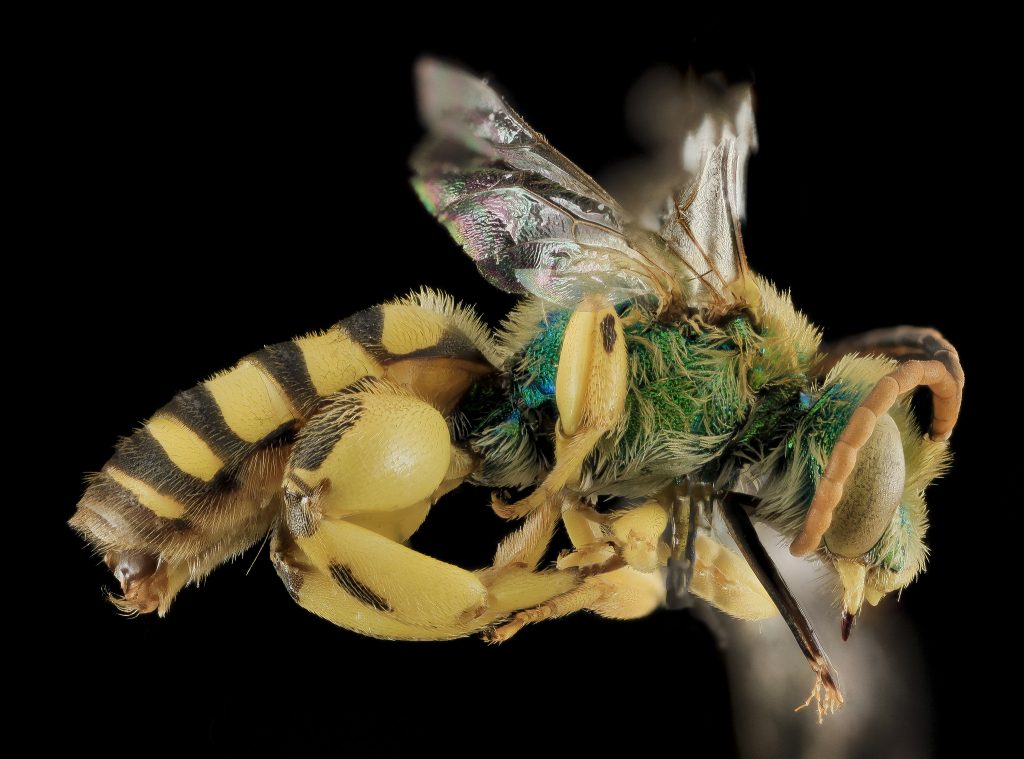Functions
Move or Stay Put – Attach – Temporarily
Differences in the hind legs of bees are often a secondary sexual characteristic, affecting male bees and increasing their chances of finding a mate.
The legs are often used to hold onto the female during mating. Many species mate in midair, so the ability to stay coupled is important. Hind legs are often expanded, widened or modified with spines.1 The inner surface of the hind legs may also be contoured to fit perfectly against the female, varying from species to species.2

Male Dufourea maura from the University of Calgary Invertebrate Collection. Note the thickness and length of the hind tibia in comparison to the front and midlegs.

Male Agapostemon femoratus from the USGS Bee Inventory and Monitoring Lab. Note how extremely expanded the femur is, so extreme that the bee was named for it.
Sources
1 The Bees of the World
Hopkins Fulfillment Service. 2007.
Michener, C.D.
2 Pre-copulatory courtship behavior in a solitary bee, Nomia Triangulifera Vachal (Hymenoptera: Halictidae)
Apidologie. 1992.
Wcislo, W.T., Minckley, R.L, & Spangler, H.C.
